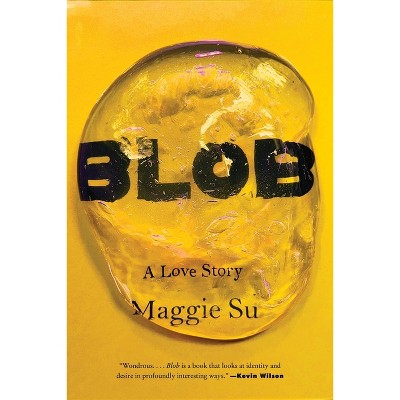Sponsored

The Chieftain and the Chair - by Maggie Taft (Hardcover)
$22.50
In Stock
Eligible for registries and wish lists
Sponsored
About this item
Highlights
- A history of how Danish design rose to prominence in the postwar United States, becoming shorthand for stylish modern comfort.
- About the Author: Maggie Taft is an art historian and founding director of Writing Space, a community-based writing center for artists and designers in Chicago.
- 184 Pages
- Art, Furniture
Description
About the Book
"In this lively book, Maggie Taft tells the story of how Danish modern furniture emerged in the wake of WWII and became all the rage in the US. By the 1950s Danish Modern furniture was everywhere-in living rooms and on the political stage. A Danish Modern chair was chosen for the first televised presidential debate, in 1960, between JFK and Richard Nixon. When the broadcast began, there were Nixon and Kennedy, sleekly seated in Hans Wegner's "Round Chair." Thanks to that broadcast, an international star, nicknamed simply "the Chair," was born. The story of Danish Modern that Taft tells is anchored in the biographies of two notable chairs: "the Chair" and another one known rather grandly as "The Chieftain" (based on Viking folklore) designed by Finn Juhl. Like Nixon and Kennedy, like Buckley and Vidal, like Elvis and the Beatles, these chairs and their designers and manufacturers duked it out for the hearts and minds and rumps of Americans sitting in front of their TV sets, drinking cocktails, getting frisky on the Danish sofas in their living rooms (and, yes, Mad Men fans, in their offices). These chairs serve as the opportunity for Taft to tell the broader tale of our love affair with Danish Modern-and with our continuing admiration for the innovative style of the early postwar period"--Book Synopsis
A history of how Danish design rose to prominence in the postwar United States, becoming shorthand for stylish modern comfort. Today, Danish Modern design is synonymous with clean, midcentury cool. During the 1950s and '60s, it flourished as the furniture choice for Americans who hoped to signal they were current and chic. But how did this happen? How did Danish Modern become the design movement of the times? In The Chieftain and the Chair, Maggie Taft tells the tale of our love affair with Danish Modern design. Structured as a biography of two iconic chairs--Finn Juhl's Chieftain Chair and Hans Wegner's Round Chair, both designed and first fabricated in 1949--this book follows the chairs from conception and fabrication through marketing, distribution, and use. Drawing on research in public and private archives, Taft considers how political, economic, and cultural forces in interwar Denmark laid the foundations for the postwar furniture industry, and she tracks the deliberate maneuvering on the part of Danish creatives and manufacturers to cater to an American market. Taft also reveals how American tastemakers and industrialists were eager to harness Danish design to serve American interests and how furniture manufacturers around the world were quick to capitalize on the fad by flooding the market with copies. Sleek and minimalist, Danish Modern has experienced a resurgence of popularity in the last few decades and remains a sought-after design. This accessible and engaging history offers a unique look at its enduring rise among tastemakers.Review Quotes
"The Chair and the Chieftain, designs now over seventy years old, remind us that designed objects can transcend their origins, the marketing narratives applied to them, their initial reception, vacillations in style, normative notions, and the fickle public eye. Abetted by historical and lovely illustrations, Taft's thoroughly engaging text provides some thought-provoking explanations for why that is."-- "Winterthur Portfolio"
"Using concise and accessible language, The Chieftain and the Chair shows how the Danish furniture industry was directed to serve the American market, being also reshaped along the way."-- "Journal of Design History"
"Taft explores the history of Danish modern design through two pieces of furniture: Hans Wegner's Round Chair, better known as simply "the Chair," and Finn Juhl's Chieftain reading chair. The former is a basic dining chair, designed as part of a set, whose defining element is a single, semicircular wooden form that serves as both back and armrests--hence the "Round" in its moniker. The latter is a cushioned chair upholstered in leather, with wide armrests and a high, regal back rising above its seat. Their differences--the Chair's slight size and the Chieftain's heftiness; the Chair's huge popularity in America and the Chieftain's relative lack thereof; Juhl's architectural education and Wegner's training in cabinetmaking--allow Taft to develop a succinct but multilayered history of Danish Modernism."-- "Nation"
"This fascinating book makes a great addition to the literature of modern design and the small scale of the book makes it possible to carry."-- "Daniella on Design"
"We may take Danish Modern for granted. But as Taft shows in her absorbing story, the furniture aesthetic was less an expression of national spirit than a complex product of colonial relationships, protectionism, state intervention, and transatlantic salesmanship."--Edward Tenner "Milken Institute"
"How did Danish Modern become a byword for mid-century cool in the United States? This study of two chairs made in 1949--The Chieftain by Finn Juhl and Round Chair by Hans Wegner--explores this tale of transcontinental tastemaking."-- "Apollo"
"[Taft's] story is not one of heroic artistic choices, but of compromises made for manufacturing at scale, successive counterfeits, the dispersal of a once-original style. . . . Taft tells the story with quick, fluid prose and a plethora of period texts, photographs, and scenes, taking us from the craftsmanship of the Copenhagen Museum of Industrial Art's Cabinetmaker Day School, where Wegner trained as a joiner in the thirties, to the TV appearance of a pair of Wegner's chairs in the Kennedy-Nixon debate in 1960."-- "Book Post"
"Succinct and engaging. . . essential for an understanding of post-war Danish and American design."-- "Art Newspaper"
"Centering her study on Finn Juhl's Chieftain Chair and Hans Wegner's Round Chair, Taft shows how a small segment of the Danish furniture market--soon folded into a broader "Scandinavian" aesthetic, cannily developed and marketed for the booming American economy--came to rule both sides of the Atlantic."-- "New Criterion"
"The Wegner chair is one of two pieces that Maggie Taft considers in her new book The Chieftain and the Chair: The Rise of Danish Design in Postwar America. The other is the Chieftain chair designed by Finn Juhl. Together, the two seem to capture two different forms of aspiration. . . .The most famous Scandi furniture now comes in flat packs, bought cheaply with a stop-off to the cafeteria for a helping of frozen meatballs with lingonberry jam. But the original appeal of Danish furniture was deeper: It promised craftsmanship at a time of ramped-up assembly line production and the pared-down aesthetic of natural wood when the space age look of new materials was ascendant. As Taft shows, these qualities were closely linked to Danish political culture in the postwar years--to its progressive thinking, vibrant democratic principles, and above all its emerging welfare state."-- "New Republic"
"Danish design (or at least stuff that looks like it) has been a fixture of American interior decoration since it was first imported in the 1950s. Pieces like Hans Wegner's Round Chair and Finn Juhl's Chieftain are ubiquitous, so it's easy to forget that someone had to make people believe they were emblems of middle-class good taste before, you know, they actually were. Taft, an art historian and writer, uses this clear, tight book to trace the origins of these objects and in doing so demolishes some of the many myths about a field you know and (might) love."-- "Bloomberg"
"A prolific author with contributions to national arts and design publications, Taft presents a deeply researched yet thoroughly accessible examination of the multidimensional impact of two reigning chairs and, more broadly, inspired artistic expression."
-- "Booklist"
"In The Chieftain and the Chair, Taft provides a rich backstory to two fundamentally familiar mid-century furniture forms. By mining Danish-language archives and obscure American repositories, Taft makes the history of these chairs accessible to an English-speaking audience. Danish design was constructed to appeal to American consumers and American taste, as The Chieftain and the Chair deftly demonstrates."--Bobbye Tigerman, Marilyn B. and Calvin B. Gross Curator for Decorative Arts and Design, Los Angeles County Museum of Art
"This book is a clever conceit--it uses two exceedingly famous chairs, Finn Juhl's the Chieftain and Hans Wegner's the Chair, to narrate a specific history about the creation, consumption, marketing, and reception of Danish Modern in the United States. These chairs are diplomatic actors in the drama that unfolds surrounding the small, but mighty country of Denmark making furniture for an export market in the United States, in which one could not exist without the other. The Chieftain and the Chair is a fresh and succinct contribution to Nordic design studies."
--Monica Obniski, curator of decorative arts and design, High Museum"In this thorough exploration of two iconic Danish chairs, Taft looks to debunk old myths and makes a convincing case for a reexamination of Danish design and how it shaped the story of not only Danish modern, but also the evolution of modern design from New York to Chicago, North Dakota to Los Angeles, in post-war America."
--Zoë Ryan, Daniel W. Dietrich, II Director of the Institute of Contemporary Art, University of Pennsylvania
About the Author
Maggie Taft is an art historian and founding director of Writing Space, a community-based writing center for artists and designers in Chicago. She is coeditor of Art in Chicago: A History from the Fire to Now.Dimensions (Overall): 7.5 Inches (H) x 6.6 Inches (W) x 1.3 Inches (D)
Weight: 1.2 Pounds
Suggested Age: 22 Years and Up
Number of Pages: 184
Genre: Art
Sub-Genre: Furniture
Publisher: University of Chicago Press
Format: Hardcover
Author: Maggie Taft
Language: English
Street Date: May 22, 2023
TCIN: 1006099444
UPC: 9780226550329
Item Number (DPCI): 247-47-8297
Origin: Made in the USA or Imported
If the item details aren’t accurate or complete, we want to know about it.
Shipping details
Estimated ship dimensions: 1.3 inches length x 6.6 inches width x 7.5 inches height
Estimated ship weight: 1.2 pounds
We regret that this item cannot be shipped to PO Boxes.
This item cannot be shipped to the following locations: American Samoa (see also separate entry under AS), Guam (see also separate entry under GU), Northern Mariana Islands, Puerto Rico (see also separate entry under PR), United States Minor Outlying Islands, Virgin Islands, U.S., APO/FPO
Return details
This item can be returned to any Target store or Target.com.
This item must be returned within 90 days of the date it was purchased in store, shipped, delivered by a Shipt shopper, or made ready for pickup.
See the return policy for complete information.
Frequently bought together
Trending Non-Fiction

$19.31
was $20.98 New lower price
4 out of 5 stars with 64 ratings

$18.28
was $19.58 New lower price
4.7 out of 5 stars with 17 ratings

$4.59
MSRP $7.99
Buy 2, get 1 free select books
4.8 out of 5 stars with 123 ratings

$6.20
MSRP $10.95
Buy 2, get 1 free select books
4.8 out of 5 stars with 33 ratings

$7.09
MSRP $9.99
Buy 2, get 1 free select books
4.9 out of 5 stars with 46 ratings
Discover more options

$15.39 - $16.83
MSRP $21.00 - $32.00
4.9 out of 5 stars with 9 ratings











